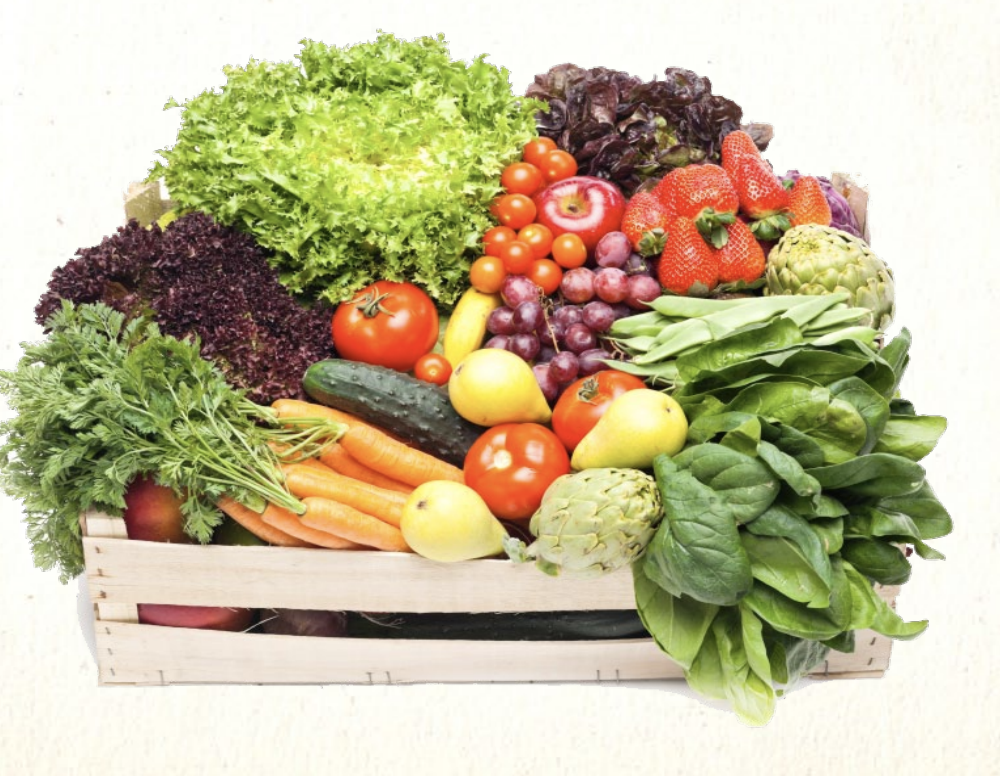
Juicing is a big, fat, glorious bonus. If you’re easing into eating vegan, fresh juices will give you mega-doses of plant power to help you feel better sooner. If you’re already plant-based, juices will turbocharge your nutritional profile. And if you want to know what it feels like to get a transfusion of life force energy directly from nature to your own bloodstream, get thee to the nearest juice bar – or better still, invest in a juicer and have the fountain ofyouth in your own kitchen.
Certainly we need the fiber that comes from whole foods, and the typical American diet is woefully devoid of it. But as important as this roughage is for good digestion, elimination, and possibly even prevention of colorectal cancer, it’s non-nutritive. The digestive pro . The digestive process is largely about extracting the liquid (that’s where the nutrition is from the fibrous portion of what you eat. When your juicer does that job, your body doesn’t have to. It’s no wonder that people who juice daily have so much energy: they’re getting “free” nutrients. It’s like getting paid for not going to work.
Why Juice?
Juices and smoothies, even when they contain some of the same ingredients, have different purposes in your healthy lifestyle. A blender purées: it grinds everything up and presents you with a sauce or soup or smoothie that has nothing removed. This is good. Juicing, however, is another level ofgood: an immediate infusion of concentrated nutrients.
Note that I said juicing, not juices. Canned and bottled juices won’t do for you what fresh ones will. By law, commercially packaged juice has to be heated to a high temperature to be sure there will be no bacterial growth during shipping and storage. When you make juice yourself, or the guy behind the counter at the health food store does, this is unheated, unadulterated nutrition, overflowing with the life energy the yogis call prana and the martial artists call chi. This subtle energy won’t show up on a bloodtest, but its abundance or lack in your body is fully apparent in how you look and feel.
Fresh fruit, vegetable, and green juices get into your bloodstream in short order and you feel alive, alert, and enthusiastic about whatever it is that’s coming next. These juices hydrate you with water that’s at once naturally distilled and at the same time, abounding in easily assimilable minerals, vitamins, and phytochemicals. Fresh juices help to flush toxins from your body, boost your immune system, and take your appetite to the next level: you’ll want healthier food because you’re a healthier person.
You can prove this to yourself if you’re some one who aches for a sweet roll at 10 a.m. or a monster cookie at half past 3. On your way to work in the morning, or at your desk in the afternoon, have a sixteen-ounce juice – carrot, celery, and spinach, maybe, or apple, cucumber, and kale. You’re likely to find that this changes what you want to consume for several hours afterwards. You may get through the day without snacking at all, or if you do want something, it’s more likely to be fresh fruit, a few nuts, or veggies and hummus. It’s strange at first, as if somebody took over your body and deleted junk food cravings from your internal hard drive. But that kind of strange gets pretty easy to live with.
What Do You Juice?
Raw food expert, Karen Knowler encapsulates it this way: “Fruit juices are good for picking you up. Vegetable juices make you feel truly nourished. And green juices balance you, reduce food cravings, and make you feel nourished and high. Take your pick!”
You sometimes hear that fruit juices are bad because they present the system with a dose of sugar and no fiber to slow its absorption. People who are sensitive to even natural sugars won’t feel good after drinking straight fruit juice. Remedy this by cutting your fruit juices with some celery or cucumber, or mixing them half and half with water or sparkling water. The only fruits I ever juice alone are melons – rind, seeds (in the case of watermelon), and all. (To set a dazzling dinner party table, alternate sangria glasses filled with watermelon juice, honeydew juice, and cantaloupe juice until there’s a refreshing pastel placeholder for every guest.)
Most juicing aficionados focus on vegetables and greens, and employ sweet fruit, cucumber (not sweet, but botanically a fruit), or carrot (a sweet root) to make an appetizing beverage. It’s certainly possible to concoct a juice that does not taste good. Life is too short for that. So in the beginning, use a recipe or work with the guidelines that follow. The base is for mildness and palatability; use the most of that. The best is for nutrition (frankly, the whole drink is for nutrition); use a reasonable amount. The bite is the wow factor; use a little.
After you’ve been juicing for a while, you’ll get a sense of the proportions and create your own blends. Once you know how much of this and that makes a delicious drink, you can juice your vegetable scraps, too. The broccoli stems, thick ends of celery, outer leaves of lettuce, and skins of beets that you used to throw away can nourish you, via your juicer, instead.
Juice Fasting, Feasting, and Cleansing
We close our eyes, put our feet up, and beg for a shoulder massage to relax our overworked and over-tense parts. We rest our brains with everything from comedy to meditation. Our digestive system, though, never gets a rest: it’s attempting to process and assimilate and eliminate and then, here comes a snack! Or it’s time for another meal. It’s like an assembly line that never shuts down. But we can shut it down by drinking only fresh juice, along with water, herbal tea, and perhaps vegetable broth, for a period of time. If you’re looking to do a little detoxing, juice fasting (or feasting) could be for you.
I say “could be” because not everyone should do it. Pregnant women and nursing moms have to wait on this; and anyone in the throes of anorexia or a wasting disease needs to be eating chewable meals on a regular schedule. People with diabetes or hypoglycemia should not do any fasting without supervision. Anyone with a condition that’s dependent on regular medication needs to get clearance from his doctor before a juice cleanse. And yo-yo dieters have to be sure they’re not looking at this as a quick weight-loss fix or they’re in for a rude awakening when they go back to eating. If in doubt, consult a health care professional with expertise in this area. Someone who’s well and wants to be vitally so should be able to juice for a period of time and benefit greatly from the experience. You may get some detox symptoms that could include headaches, fatigue, skin breakouts, wakefulness at night, or a very coated tongue upon arising. If you regularly consume alcohol, caffeine, chocolate, dairy, sugary treats, salty snacks, and over-the-counter drugs, you’ll feel the detox more. These mildly uncomfortable episodes are usually fleeting, though, and most people’s predominant experience with a few days on juice is lightness, energy, a clear head, and an unexpected sense of freedom and joy.
I do a juice fast, three to seven days, in March, June, September, and December when the seasons change. I used to psyche up for these like an impending siege – “Okay, you know what’s coming: no food” – but now I look forward to them. Some people like to juice one day a week. They just know that Monday (or some day) is the one on which they abstain from solid food. They say that this is their most peaceful day, and they cherish the extra time it gives them. We spend a lot of life cooking and eating and cleaning up, and once-a-week fasters divert the time they save to something delicious in a way that food can’t be – reading a novel, walking in nature, creating something that wasn’t here before. You can think of juicing as going the extra mile for your own wellbeing. Whether you juice daily, do a periodic juice fast, or both, you’re giving your body a gift. And you know what happens with giving: it always comes back around.

